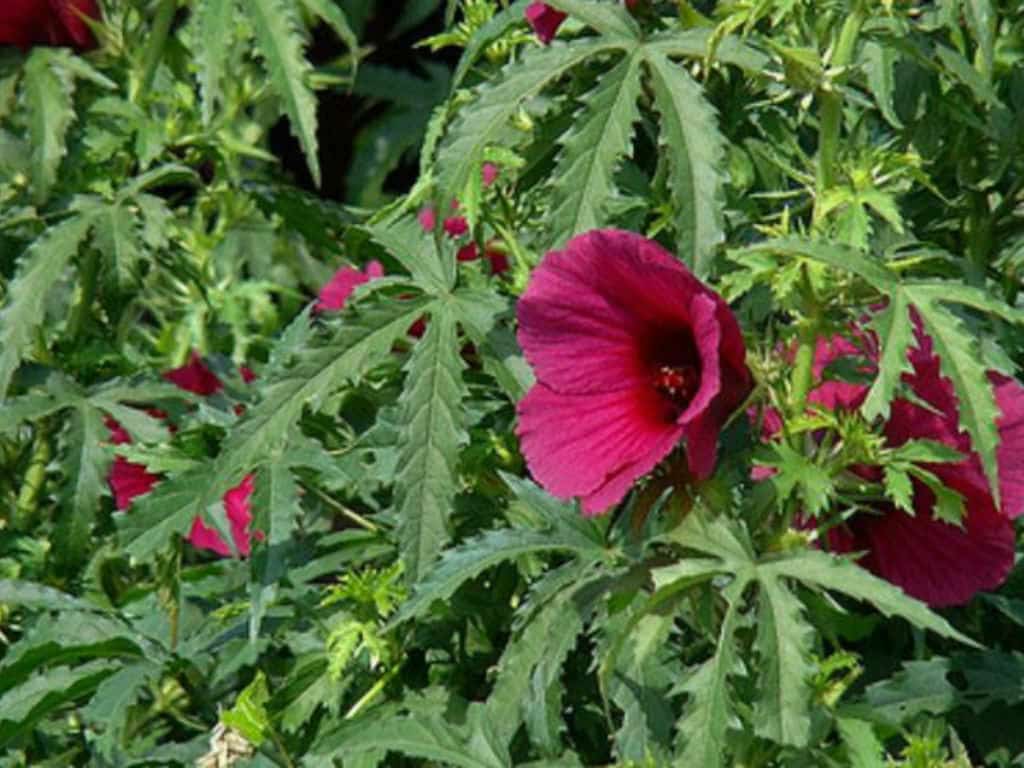Kenaf is an important bast fiber crop. It is however grown largely in small backyard gardens in most parts of Nigeria, especially in the north. India is the major producer.
Kenaf Origin
It originated from tropical and subtropical Africa where it is commonly a wild plant. It has now been taken to most tropical and subtropical countries.
The Ecology of Kenaf
Kenaf is grown between 45°N and 30°S. It requires warm temperatures (15-25°C) and well-distributed rainfall over 4-5 months.
The plant is photoperiod sensitive; flowering when days are short (12 hours or less) and growing more vegetative when days are long.
The crop is grown for long days to obtain as much rapid vegetative growth as possible before flowering begins.
It thrives best on well-drained, neutral, sandy loam soils, rich in humus. It does not tolerate waterlogging.
Kenaf Botany
The cultivated forms are erect herbaceous annuals, 2.5-4m tall, with well-developed taproots.
The straight stems can be green, red, or purple with alternate leaves which vary in shape depending on the cultivar; from cordage, deeply divided, palmate to oblong-lanceolate lobes.
The flowers are borne singly in the axils of upper leaves and the fruit is a capsule. Seeds are numerous and usually brown.
Generally, self-pollination has been observed.
Cultural practices of Kenaf
The seeding rate for fiber production is about 10 kg/ha. The seedbed for planting should be level and free of weeds.
Dibble the seeds in rows 20-25cm apart and thin to 5-10cm between plants within rows.
Sowing should be done as soon as rains are established in April (South) and June(North).
Avoid growing kenaf after cowpea as both crops are very susceptible to root-knot nematodes.
Weeds can be controlled by weeding 2-3 times after planting at monthly intervals. Herbicides can also be used; eg metolachlor or alachlor at 1.5khg a.I. applied at the rate of 300kg/ha of NPK (25-10-0) just before or after sowing.
Harvesting and Processing of Kenaf
The crop is harvested 3-5 months after sowing. The longer the vegetative phase the greater the will be yield.
The best time to harvest is when about 10 flowers are in bloom, at which time the fiber is at its best quality and more easily separable.
If harvesting is delayed until the seed has been set, the fiber is coarser and lacks luster. The stems are cut at ground level and tied into bundles.
The leafy tops are cut off and stems are retted in water. Retting takes 5-14 days. The bark is then stripped and gently beaten to separate the fiber, which is then washed and dried in the sun.
Kenaf Yields
The average fiber out-turn is about 4% of the weight of green stems or 16% of the weight of dry stalks.
Yields of 1300-1500 kg/ha of fiber or ribbon can be obtained under good management; a fiber yield of 6000 kg/ha is obtainable.
Uses of Kenaf
1. The fibers are used on a fairly large scale, mixed with jute, in the manufacture of bags, sacks, cordage, netting, and fishing nets.
2. Because of their strength and durability, the fibers can be used in the manufacture of tags and abrasives (sandpaper).
3. The seeds contain about 20 percent oil, which is sometimes extracted and used as a lubricant. It is also suitable for the manufacture of soap, linoleum, paints, and varnish.
Diseases of Kenaf
The most serious diseases are anthracnose caused by Colletotrichum hibisci, leaf spot caused by Cercospora hibisci, and stem rot caused by Diplodia hibisci.
These diseases can be controlled with fungicides or the use of resistant varieties.
Insect pests affecting Kenaf Plants
Insects affecting kenaf include black flea beetles, cotton stainer larvae Dysdercus spp), cotton aphids (APHIS gossypii)
root-knot nematode Meloidogyne can also affect yield.








